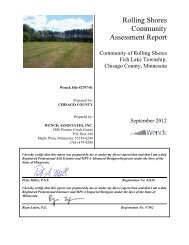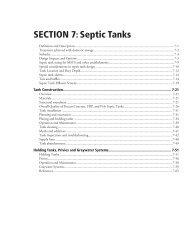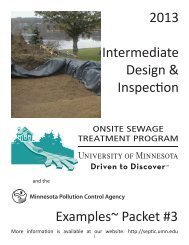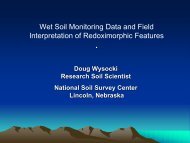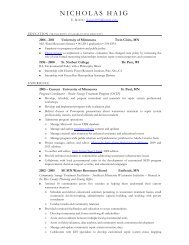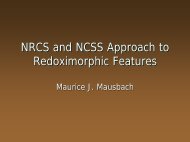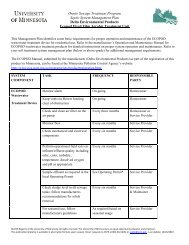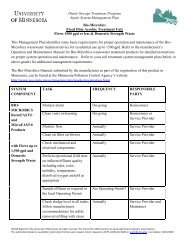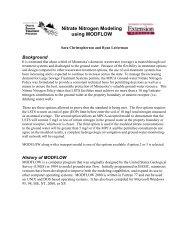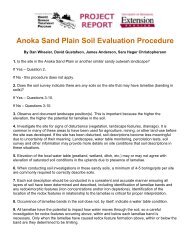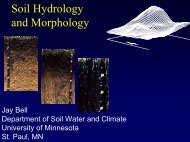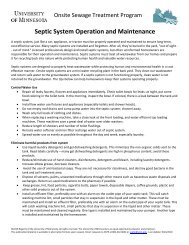Small Community Wastewater Treatment Decisions - Onsite Sewage ...
Small Community Wastewater Treatment Decisions - Onsite Sewage ...
Small Community Wastewater Treatment Decisions - Onsite Sewage ...
You also want an ePaper? Increase the reach of your titles
YUMPU automatically turns print PDFs into web optimized ePapers that Google loves.
making commitments because sometimes the reporting and additional work required may be morethan the community is willing to do or cost more than the funds are worth.Working with ProfessionalsSome of the best advice about working with professionals appears in Assessing <strong>Wastewater</strong> Optionsfor <strong>Small</strong> Communities: Trainer Manual for Local Decision Makers published by the EPA-fundedNational Environmental Training Center in West Virginia. This publication states, “Many professionalsmay be biased toward particular technologies, so they may not seriously consider optionsthey are unfamiliar with or simply don’t like.”The community team will need to work with a variety of professionals (engineers, regulators, consultants,educators, etc.) who bring individual values, experiences, knowledge and profit motiveswith them in order to find the solutions that best fit the community’s needs. By screening proposals,interviewing candidates, checking references, using multiple sources of information, andinvolving diverse interests in the process, the community can find a solution that they can live withfor many years to come. They must use good critical thinking skills to sort through all of theoptions and information.Thousands of communities in Minnesota and across the country are facing wastewater treatmentchallenges. There are practical solutions available but it’s up to citizens, elected officials, and staffto find and implement them!For More InformationMuch more detailed information on all of these topics is available in the University of MinnesotaExtension Service publication #BU-07734 <strong>Small</strong> <strong>Community</strong> <strong>Wastewater</strong> Solutions: A Guide to Making<strong>Treatment</strong>, Management and Financing <strong>Decisions</strong>, available through the Distribution Center, 800-876-8636 or local County Extension Offices. The On-Site <strong>Sewage</strong> <strong>Treatment</strong> Program also offers educationalprograms for communities. Consult the website at: www.bae.umn.edu/septic or contact KenOlson at (800) 657-3516 for more information.Find more University of MinnesotaExtension Service educational information atwww.extension.umn.eduFO–07735–S2002Phyllis W. Unger, Production and Copy EditorProduced by Communication and Educational TechnologyServices, University of Minnesota Extension Service.Availablein alternative formats upon request. Printed on recycled paperwith minimum 10% postconsumer waste.The University ofMinnesota Extension Service is an equal opportunity educatorand employer. Copyright © 2002, Regents of the University ofMinnesota.All rights reserved.4



